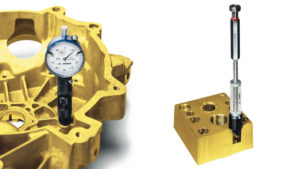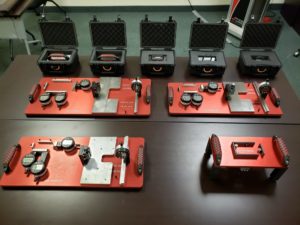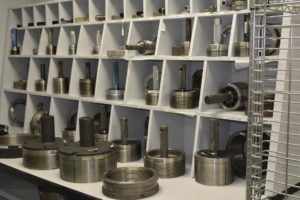Metrology Glossary: Lead Gage
What Is A Lead Gage?
A lead gage is a tool for measuring thread lead, which is the distance between threads on a threaded part. It determines how much a nut or bolt advances in one full turn. Used in various industries for quality control, a lead gage is used by placing its contact points in the threads and measuring the gap. The tool features a scale indicating thread lead in inches or millimeters. When thread lead deviates from specified tolerance, it can lead to improper fits or performance issues. Lead gages are crucial for early detection of lead errors, ensuring threaded parts meet desired specifications and preventing problems.
What Are Lead Gages Used For?
Quality Control:
- Manufacturing: Validates the precision of threaded components such as bolts, nuts, and screws by confirming the accuracy of thread lead, ensuring adherence to exact specifications.
- Automotive: Essential for upholding engine performance and safety in vital elements such as +piston rods and cylinder heads by verifying optimal thread lead.
- Aerospace: Ensures the flawless fit and functionality of critical fasteners within aircraft structures, guaranteeing the reliability of aerospace systems.
- Construction: Verifies dependable connections within structural elements such as beams and trusses, promoting the integrity of construction projects.
- Electronics: Confirms thread accuracy in electronic components to facilitate proper assembly and functionality in electronic devices.
Performance Optimization:
- Enhances thread engagement: Precision in thread lead results in stronger and more secure connections, minimizing the risk of failures.
- Prevents binding and cross-threading: Ensures a smooth thread engagement process, preventing potential damage to threads and components.
- Reduces friction and wear: Accurate thread lead minimizes friction between mating parts, extending the lifespan and optimizing the performance of components.
- Streamlines assembly efficiency: Accurate threads contribute to faster and more efficient assembly processes, saving valuable time and resources.
Safety and Reliability:
- Mitigates accidents and malfunctions: By preventing improper thread lead, potential component failures and safety hazards are minimized.
- Preserves system integrity: Ensures the proper functioning of critical systems reliant on threaded connections, upholding overall system integrity.
- Elevates product quality: The precision of threads enhances overall product quality and reliability.
- Ensures regulatory compliance: In adherence to industry standards, lead gages play a crucial role in ensuring compliance with strict regulations regarding thread lead.
Related Terms
A thread gauge, also known as a screw or pitch gauge, precisely measures the pitch or lead of screw threads. The pitch is the distance between consecutive threads, while the...
A thread profile gauge serves as a precision tool designed for the measurement and inspection of tapered threads....










